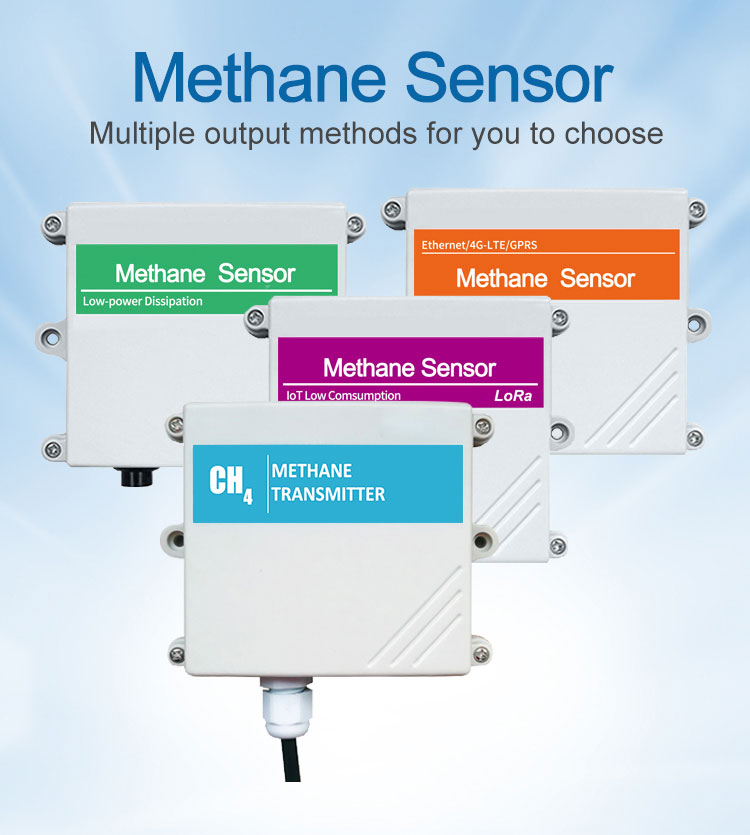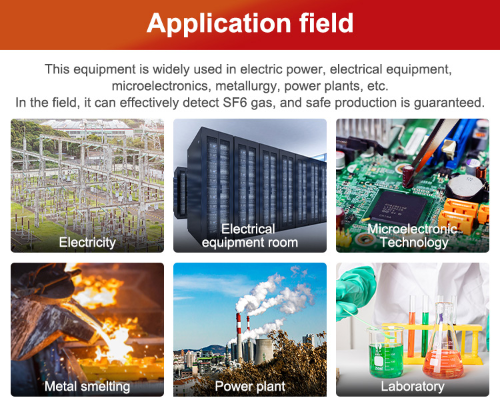Methane is a potent greenhouse gas with significant implications . It is the second most prevalent greenhouse gas after carbon dioxide and has a warming potential that is 28 times higher than CO2 over a 100-year time horizon. Methane emissions come from various sources, including agriculture, waste management, energy production, and industrial processes. To address the challenge of methane emissions , methane sensors have emerged as crucial tools for monitoring and controlling methane leaks.
Understanding Methane Sensor
Methane sensor refer to sensing devices that detect and measure the presence and concentration of methane gas in the air or other gases. These sensors rely on different sensing technologies, and laser absorption spectroscopy, depending on the sensitivity, selectivity, response time.
Infrared sensor use the absorption of infrared radiation by methane molecules at specific wavelengths, which depends on the rotational and vibrational modes of the molecule. These sensors are highly selective, fast, and stable, but may require frequent calibration and may be affected by temperature, humidity, or dust.
Catalytic bead sensor use a platinum wire or bead that catalyzes the combustion of methane in the presence of oxygen, generating heat and a change in resistance that is proportional to the methane concentration. These sensors are robust, reliable, and insensitive to most interfering gases, but may require a high operating temperature and may degrade over time.
Semiconductor sensor use a thin film of metal oxide, such as tin oxide or zinc oxide, that changes its electrical conductivity in response to the adsorption and desorption of methane molecules on its surface. These sensors are inexpensive, small, and sensitive to low methane concentrations, but may require a heating element and may be affected by aging or poisoning by reducing gases.
Laser absorption spectroscopy sensors use tunable diode lasers or quantum cascade lasers that emit light at specific wavelengths that are absorbed by methane molecules. These sensors can achieve very high accuracy, resolution, and range, but may require more complex electronics and optics and may be more expensive than other sensor types.
Benefits of Methane Sensor
Methane gas sensor offer several benefits for addressing the challenge of methane emissions and mitigating their impact on the environment, including:

Early warning and prevention of methane leaks and fires: Methane sensors can detect methane leaks and emissions at very low concentrations, often below 1% by volume, which is well below the lower explosive limit (LEL) of methane-air mixtures. This can provide sufficient time for personnel to evacuate or take corrective actions before a potential ignition source triggers a fire or explosion.
Compliance with environmental regulations and standards: Methane sensors are mandatory in many jurisdictions and industries that handle or store methane, such as oil and gas operations, landfills, wastewater treatment plants, and livestock farms. These regulations and standards, such as EPA Method 21, CSA B149.2, and ISO 16145, specify the installation, testing, and maintenance requirements for methane sensors, to ensure their reliability and effectiveness.
Monitoring and control of methane emissions: Methane sensors can help monitor and control the emissions of methane from various sources, such as pipelines, wells, tanks, or manure pits. This can support the achievement of environmental targets, such as greenhouse gas reduction or air quality improvement, and prevent the unintended release of methane into the atmosphere or groundwater.
Quality control and process optimization: Methane sensors can provide real-time data on the methane purity, flow rate, and pressure, which can be used for quality control and process optimization in methane production, transportation, and utilization. This can enhance the efficiency, productivity, and cost-effectiveness of methane systems and reduce the risks of contamination or malfunction.
Types of Methane Sensor
Methane sensors can be classified into several categories, based on their sensing technology, form factor, output signal, and application area. Some common types of methane sensors include:

Fixed methane sensors: Fixed methane sensors are permanently installed in specific locations, such as pipelines, wells, tanks, or facilities, where methane leaks or emissions are likely to occur. These sensors typically have a rugged housing, a wired or wireless communication interface, and a local or remote display or alarm.
Portable methane sensors: Portable methane sensors are handheld or wearable devices that can be carried by personnel to survey or inspect areas where methane leaks or emissions are suspected or expected. These sensors are usually battery-powered, lightweight, and easy to operate, and may have additional features, such as datalogging, GPS tracking, or voice alerts.
Online methane analyzer: Online methane analyzers are continuous monitoring systems that can measure the methane concentration in a gas stream, such as a process vent, a flare stack, or a pipeline. These analyzers typically use more sophisticated sensing technologies, such as Fourier transform infrared spectroscopy (FTIR) or mass spectrometry (MS), and may have higher accuracy, resolution, and range than point sensors.
Multi-gas detector: Multi-gas detectors are instruments that can detect multiple gases simultaneously, including methane, along with other toxic or combustible gases, such as carbon monoxide, hydrogen sulfide, or volatile organic compounds (VOCs). These detectors are useful for applications where multiple hazards are present or where a single sensor may not provide sufficient coverage or reliability.
Applications of Methane Sensors
Methane sensors have diverse applications across various sectors and contexts, where methane is used or produced, and environmental and safety concerns are paramount. Some common applications of methane sensors include:

Oil and gas industry: Methane sensors are widely used in the oil and gas industry, which is one of the largest sources of methane emissions globally. These sensors can detect methane leaks from pipelines, wells, compressors, and storage facilities, and can enable timely repairs and maintenance to prevent further emissions. Methane sensors can also help optimize the production and transportation of natural gas, by ensuring the correct composition and pressure of the gas stream.
Waste management: Methane sensors are essential components of waste management systems, such as landfills, anaerobic digesters, and wastewater treatment plants. These sensors can monitor the methane levels in the landfill gas, biogas, or sewage gas, and can prevent overpressure, underpressure, or leakage that could compromise the performance, durability, or safety of the system. Methane sensors can also facilitate the recovery and utilization of methane as a renewable energy source.
Agriculture: Methane sensors are increasingly used in agriculture, particularly in livestock farming, where enteric fermentation and manure management contribute significantly to methane emissions. These sensors can measure the methane emissions from cattle, pigs, or poultry, and can inform strategies to reduce these emissions, such as dietary modification, manure management, or biogas capture.
Energy sector: Methane sensors are important tools for the energy sector, which includes electricity generation, heating, and transportation. Methane sensors can monitor the methane content of natural gas pipelines, fuel cells, or boilers, and can ensure the efficient and safe use of methane as a fuel. Methane sensors can also contribute to the development of new technologies, such as carbon capture and storage (CCS) or hydrogen production from methane.
Environmental research and policy: Methane sensors are critical for environmental research and policy, which aim to understand and mitigate the impacts of methane emissions on the climate and ecosystems. Methane sensors can provide accurate and reliable data on methane emissions from various sources, such as wetlands, permafrost, or wildfires, and can inform scientific studies, modeling, and decision-making at local, regional, and global scales.
Future Developments in Methane Sensors
As the urgency of addressing methane emissions grows, methane sensors are expected to evolve and improve in several ways:
Integration with IoT : Methane sensors are likely to become more connected and intelligent, using Internet of Things (IoT) and artificial intelligence (AI) technologies to transmit, analyze, and interpret methane data in real-time. This will enable faster and more accurate detection of methane leaks and emissions, better prediction of methane behavior and performance, and enhanced visualization and reporting of methane data.
Miniaturization and flexibility: Methane sensors are likely to adopt smaller, lighter, and more flexible form factors, allowing for easier integration and deployment in various environments and applications. This will also facilitate the customization and personalization of methane sensors, based on the specific needs and preferences of users.
Standardization and interoperability: Methane sensors are likely to become more standardized and interoperable, using common protocols and interfaces. This will promote collaboration and innovation among manufacturers, developers, and stakeholders, and enable the sharing and reuse of methane data across different domains and platforms.
Environmental and social impact assessment: Methane sensors are likely to play a greater role in assessing and mitigating the environmental and social impacts of methane systems, such as land use, water consumption, noise pollution, or community engagement. This will require methane sensors to integrate with other sensing and monitoring technologies, such as weather stations, noise meters, or social media analytics.
Conclusion
In conclusion, methane sensors are essential tools for addressing the challenge of methane emissions and mitigating their impact on the environment. By understanding the working principles, types, applications, and future developments of methane sensors, we can better appreciate their potential impact on our society and planet. As methane emissions continue to pose a threat to our climate and ecosystems, methane sensors are poised to play a pivotal role in shaping our response and fostering a sustainable and resilient future.